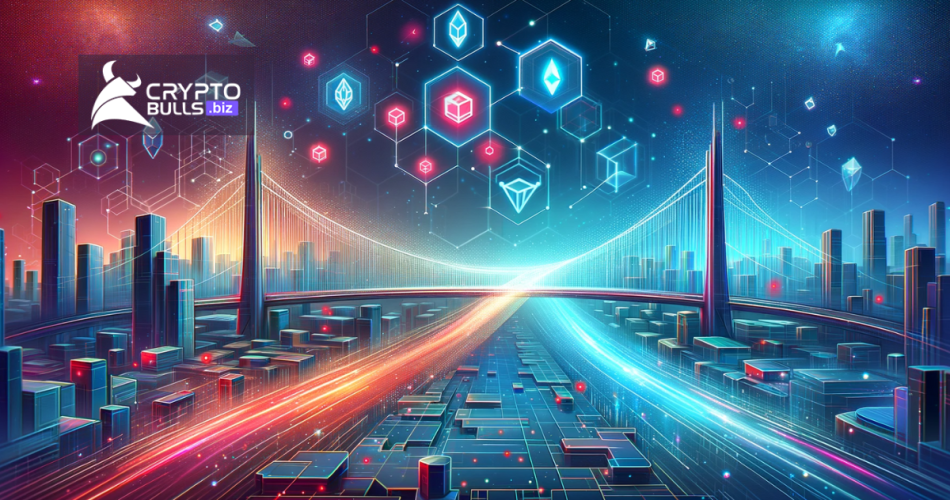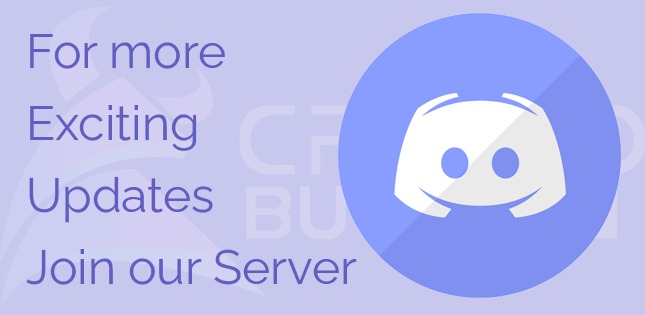Transferring Tokens from Polygon Network to Solana: A Comprehensive Guide
The blockchain ecosystem is rapidly evolving, with platforms like Polygon and Solana gaining significant traction. These networks offer unique features that attract a diverse range of users and developers, including fast transaction speeds, low gas fees, and access to a wide range of decentralized applications (dApps). The purpose of this blog is to guide readers on transferring tokens between these two networks.
The Growing Popularity of Polygon and Solana
Polygon and Solana have grown massively in popularity, making them the fastest-growing blockchain ecosystem in the crypto space. Both offer high transaction speeds and scalability, making them attractive for various applications. As of November 22, 2023, Polygon’s Total Value Locked (TVL) has reached ~$1.17 billion, while Solana’s TVL has reached a new high of ~$2.078 billion. In terms of market capitalization, as of November 22, 2023, Polygon’s market capitalization is approximately ~$6.3 billion and Solana’s market capitalization is ~$22.91 billion. Polygon has a fixed max supply of 10 billion tokens, while Solana does not have a fixed max supply.

Since its introduction in 2017, Polygon has seen rapid growth and adoption. On the other hand, Solana was launched in March 2020 and rose to prominence quickly. The unique features of both platforms contribute to their popularity and the growing number of dApps being developed on these platforms.
Here are some popular decentralized applications (dApps) developed on both Polygon and Solana:
Polygon
- Plasma-Enabled Sidechain: A Layer 2 scaling solution for Ethereum that uses a technology called Plasma to process transactions off-chain.
- PoS SportX: A sports and esports betting platform.
- ZED RUN: A digital horse racing game where users can buy, breed, and race their horses.
- Easy Fi: A universal layer 2 lending protocol for digital assets.
- QuickSwap: A decentralized exchange (DEX) based on Ethereum, with lightning-fast speed and low fees1.
Solana
- Degenerate App AcademySolPunks: A collection of 10,000 unique, algorithmically generated NFTs on the Solana blockchain.
- Sollamas: Another unique NFT project on Solana.
- Solsea: An NFT marketplace on Solana.
- Neopets Meta: A play-to-earn virtual pet game built on Solana.
- Magic Eden: The most popular and successful secondary marketplace for Solana NFTs.
Why Transfer Tokens Between Blockchains?
There are several reasons why one might want to transfer its tokens between blockchains. Some users might be attracted to some of the specific features that a blockchain offers while others might be interested in leveraging specific features that are exclusive to a certain blockchain network. For example, a user A might want to transfer his/her tokens to Polygon from Solana to take advantage of the access to Ethereum ecosystem while user B wants to take advantage of lower gas fees and access a Decentralized application (dapp) that is only available on a Solana network.
There are several reasons that one might want to transfer his/her tokens from one blockchain to another, some of them being:
- How well does a blockchain handle the increasing demand users want a scalable blockchain to take advantage of faster transaction times and lower fees
- Having a lower transaction fee than others so that users can save money on fees by transferring their tokens to a more cost-efficient blockchain.
- The ability of a blockchain to communicate and share data easily makes it more interoperable and gives users access to a wider range of services.
- Some blockchains offer unique features that are not available on other blockchain networks, like
- Solana is known for its speed and scalability,
- Polygon is fully compatible with Ethereum,
- Binance Smart Chain has support for EVM-compatible smart contracts.
- A liquid blockchain that has more trading activity than others as users can buy and sell their tokens more easily.
Wallet Compatibility
Wallet compatibility is essential for transferring tokens between blockchain networks such as Solana and Polygon. This is because each blockchain network has its unique protocol, and has its way of recording and verifying transactions. Therefore, having an interoperable wallet is a good thing to have. Some of the popular wallets that provide users with the flexibility to manage their assets across different networks within a single interface include Phantom, Trust Wallet, MathWallet, Exodus etc.
But you have to be careful while choosing any wallet as it is not a decision to be taken lightly. It requires careful consideration and due diligence to ensure a safe and smooth crypto experience. There are also several other reasons for choosing a good wallet:
- A wallet should be secure and protect the user’s assets from hacking and theft
- Wallets should give users complete control over their funds
- Wallets should securely store user’s private and public keys
- Wallets should allow users to interact with blockchain networks to send, receive, and store cryptocurrencies.
- Wallets should be compatible with the cryptocurrencies that users want to store and manage
Why do you need an account on both Solana and Polygon?
Having accounts on both Polygon and Solana is essential for anyone looking to fully engage with the opportunities, interacting with the full range of applications and services available on both networks. It provides flexibility, cost efficiency, access to unique features, and risk diversification, and ensures users are prepared for future developments.
There are several reasons to have accounts on both Solana and Polygon:
- Interoperability – having accounts on both Polygon and Solana allows users to seamlessly interact with both networks and access a wider range of dapps and services.
- Cost efficiency – By having accounts on both networks, users can choose to perform actions on the network that offer lower transaction fees at any given time.
- Access to unique features – Each network has its unique features and advantages. For example, Polygon offers scalability solutions for Ethereum, while Solana is known for its high-speed and low-cost transactions.
- Token Transfers – Users often need to transfer tokens between different networks for various purposes such as trading, staking, or participating in DeFi protocols.
- Risk diversification – Having accounts on multiple networks can help diversify risk and ensure that users can still operate even if one network experiences issues or downtime.
- Future-proofing – Having accounts on multiple networks ensures that users are well-positioned to interact with new developments in the blockchain space as they arise.
Selecting the Appropriate Bridge
A blockchain bridge is a connection that allows the transfer of assets between different blockchain networks. They allow users to access a wider range of dapps and services, take advantage of lower transaction fees, and diversify risk. This is particularly important in the context of Polygon and Solana, as users may want to move assets between these two blockchains for various reasons, such as interacting with different dApps or taking advantage of arbitrage opportunities.
Some of the best bridges that you can use are Portal Token Bridge, Binance Bridge, Avalanche Bridge, etc. These bridges are popular choices for transferring tokens because of their security, speed, and user-friendliness.
When selecting a blockchain bridge, it is important to consider several factors, including:
- Security – The bridge should have a strong security model to prevent attacks and ensure the safe transfer of assets and be audited by a reputable security firm.
- Fees – Bridges charge different fees for transferring tokens. It is important to compare the fees of different bridges before choosing one.
- Speed – The speed of a bridge is important if you need to transfer tokens quickly. Some bridges are faster than others.
- Ease of use – The bridge should have a user-friendly interface that makes the token transfer process easy to understand.
- Supported networks – The bridge should have the support of the networks that you want to transfer tokens between.
- Community Trust – Look for bridges that are widely used and trusted by the community.
- Bridge history – Consider the bridge’s history and track record. Have there been any security breaches or incidents in the past?
- Transparency – Choose a bridge that is transparent about its operations and fees.
Step-by-Step Guide for Transferring Tokens
Transferring tokens between Polygon and Solana is a simple process. By following the steps mentioned below, you can easily transfer your tokens between these two popular blockchain ecosystems.
- Step 1 – Visit the Bridge website, for example, we will use the Portal Bridge Website

- Step 2 – Connect your wallet
- Step 3 – Select your Source Chain (e.g., Polygon) and Target Chain (e.g., Solana)
- Step 4 – Select the token you want to transfer and enter the amount
- Step 5 – Preview the transaction and click “Send”
- Step 6 – Confirm the transaction in your wallet
Once the transaction is approved the tokens you selected will be transferred to the Target chain (Solana). It may take a few minutes before your tokens to your destination wallet.
Conclusion
The growing popularity of blockchain ecosystems like Polygon and Solana has opened up a world of opportunities for users to interact with various decentralized applications (dApps). However, to fully leverage these opportunities, it’s crucial to understand the importance of wallet compatibility and the need to have accounts on both networks. Transferring tokens between these networks involves selecting an appropriate bridge that ensures security, ease of use, and cost-effectiveness. While there are several reliable bridges available, it’s important to do your due diligence before choosing one.


